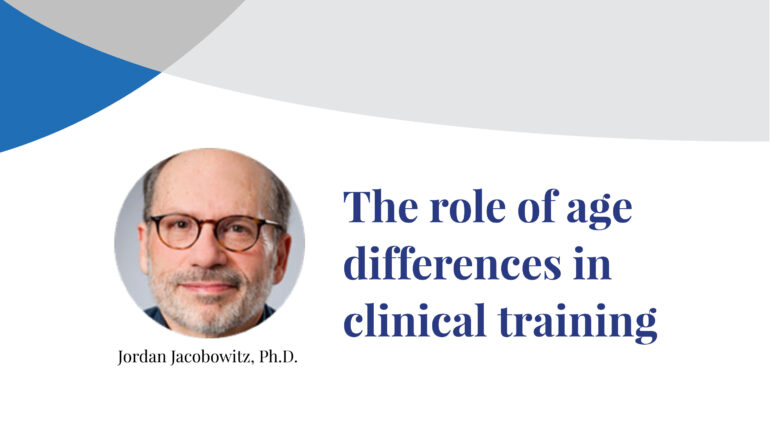This brief communication is based on a presentation I gave last year on the question of how age differences may impact the way patients and therapists on one hand, and students and professors on the other hand, understand and react to one another. I will focus here on the latter issue, especially how age differences influence what is taught and how it is taught in clinical education.
Age differences overlap generational differences, and both these differences intersect with many diversity factors such as gender, race, ethnic background, education, environmental contexts, etc. Consequently, people of different ages are essentially from different “cultures” or have been enculturated differently (even if living in the same geographical areas). These cultural differences pose challenges to empathy, understanding, and communication both within and across generations.
In the professional literature, there is very little to be found on how professors may perceive younger or other-generational students, how younger students or professors perceive older professors, or how older professors perceive themselves or younger professors. Overall, how transgenerational transactions influence clinical education is very unclear. This area awaits the eager researcher.
Aging and development in general occur in a socio-historical context. Older people, for example, are not only different from younger people in terms of age and its correlated biological and developmental processes, but also in terms of past experiences (“birth cohort” differences, primarily those of the formative years but also those during adulthood) and current living conditions (“time of measurement” or contemporary situations). Essentially, these historical and social differences mean that younger and older people develop in, and to some extent live in, different cultures or quasi-cultures, even if one keeps the geographic setting of those respective experiences constant. So life, self, and preferences are likely to be perceived qualitatively differently across generations.
Changing times and differential experiences, training, and professional paradigms (e.g., differences in theoretical orientations) between older professors and younger students may influence the educational process and its effects in the field of clinical psychology. For example, I and my educational and generational peers have noticed a trend over the years in the field of psychological assessment in clinical psychology wherein older teachers and supervisors have a different approach to assessment than younger ones. Older clinical psychologists were trained years ago (a generational cohort effect) when the emphasis on assessment was on understanding the underlying motives, conflicts, and defenses of clients. Psychodynamic paradigms were dominant then. Younger clinical psychologists were more likely trained with a different emphasis on assessment, namely identifying observable behaviors, self-reported symptoms, and diagnostic syndromes. Cognitive-behavioral paradigms have been more in vogue. (It should be noted that the way psychological services are paid for has changed over the years.) Consequently, there is a noticeable “disagreement” among older university professors and younger clinical site supervisors regarding the content, process, and goals of assessment, which frequently puts graduate students in a bind.
The tensions between relatively younger and older professors in clinical psychology departments was noted by Fox, Karson, and Cornish (2022). These tensions can generate conflict which in turn may generate confusion among students. Older faculty may be less focused than younger faculty on establishing careers and seeking promotions and thus may form more relational and generative connections with students than younger faculty. Older faculty may also promote or teach time-tested and personally experienced ways of understanding and helping clients. In contrast, younger faculty members may channel students toward “producing” more work such as articles and presentations. Younger faculty may also value innovation and new technology while casting away “old” practices.
The main goal of this brief communication is to raise awareness of “age” as an indicator of possible differences in the way people interact and even in the way curriculum is formed and enacted. Age differences (or similarities) among professors and between professors and younger students may be associated with different preferred therapeutic modalities and orientations as well as different educational goals, processes, content, and transactions. All these possible differences are likely moderated by other demographic characteristics such as gender, race, socioeconomic status, and others.
On one hand, professors need to be aware of what “age” means to them and how it possibly has changed them. Students should be aware how the people of varying ages who are teaching them have their own differing takes on life and professional practice. This diversity poses an interesting challenge to educational standardization. Every “other” may bring something different to the transaction, and this difference should be processed to induce understanding and growth instead of conflict, criticism, and suppression.

